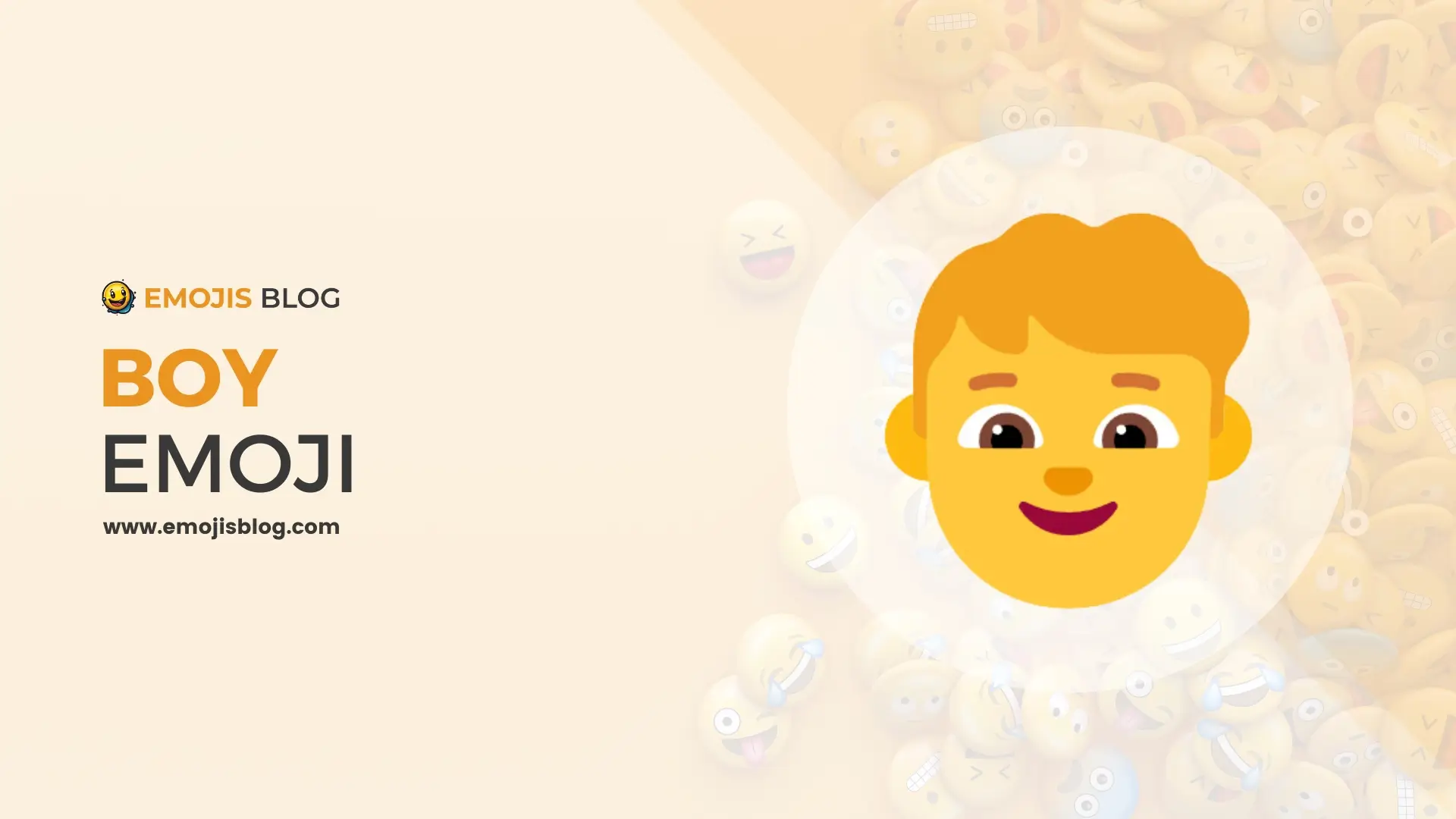What Does The Boy Emoji Mean 👦
👦
The Meanings Of Boy Emoji 👦
The boy emoji 👦 is a digital icon representing a young male, commonly used across various messaging platforms and social media to convey messages related to youth, childhood, or to represent young male individuals. With its inclusion in the Unicode Standard, it serves as a universal symbol that transcends language barriers, offering variations in skin tones to promote inclusivity and diversity. Whether used to express personal identity, familial relationships, or emotional states, the boy emoji encapsulates the simplicity and complexity of digital communication, reflecting broader societal themes around identity and representation in the digital age.
Technical Information
| Attribute | Details |
|---|---|
| Emoji | 👦 |
| Description | A stylized representation of a young male. |
| Unicode Version | Varies (added in Unicode 6.0) |
| Emoji Version | Varies (initially introduced in Emoji 1.0) |
| Category | People & Body |
| Subcategory | Person |
| Skin Tone Variations | Yes (light, medium-light, medium, medium-dark, dark) |
| Platforms Supported | iOS, Android, Windows, macOS, and others |
| Keywords | Boy, young, male, child, guy |
Understanding the Boy Emoji: A Comprehensive Guide
The boy emoji, represented by a simple, cartoonish figure of a young male 👦, is a versatile digital icon used across various platforms. Its usage spans from text messages and social media to articles and digital communications. This seemingly straightforward emoji carries a range of meanings and uses, depending on the context in which it is deployed. Below, we explore the origins, variations, and the multifaceted ways in which the boy emoji is used in digital communication.
Origins and Evolution
The boy emoji first made its appearance as part of the Unicode Standard, which is a foundational framework for digital text and emojis. It was introduced to ensure consistent representation of text across different digital platforms. The boy emoji is part of a larger family of human emojis, designed to represent a broad spectrum of ages, genders, and races.
Over time, the depiction of the boy emoji has evolved, with updates to its design being rolled out to make it more inclusive and representative of different ethnic backgrounds. These changes reflect the broader tech industry’s efforts to embrace diversity and inclusivity in digital communication.
Variations and Skin Tones
One of the significant enhancements to the boy emoji has been the introduction of skin tone variations. This development allows users to choose from a range of skin tones to represent themselves or others more accurately. These variations are part of the emoji modifiers, which are based on the Fitzpatrick scale, a dermatological standard for classifying human skin colors.
In addition to skin tone variations, some platforms offer different hair styles and clothing options for the boy emoji, further personalizing the user experience. These customizations help in making digital communication more expressive and representative of the user’s identity or the message they wish to convey.
Uses and Meanings
The boy emoji is used in a myriad of ways, each carrying its own nuances and implications. Here are some of the most common uses:
- Representation of Youth: At its most basic, the boy emoji represents a young male. It can be used to talk about sons, brothers, or any young male figure in one’s life.
- Personal Identification: Many users choose the boy emoji to represent themselves in digital communication, especially if they are discussing topics related to their personal experiences or childhood.
- Emotion and Expression: Like many emojis, the boy emoji is often used to add emotional depth to a message. It can signify innocence, joy, or a playful tone, depending on the context.
- Symbolic Meaning: In some cases, the boy emoji is used symbolically to represent concepts such as youthfulness, growth, or a new beginning. It can also be part of storytelling, where emojis are used to convey a narrative or theme.
Cultural Impact and Controversies
The boy emoji, while seemingly innocuous, has also been at the center of discussions about representation and inclusivity in digital communication. The evolution of emoji designs to include a wider range of skin tones and characteristics is a response to public demand for more diversity in digital representation. However, this progress has also sparked debates about the adequacy and sensitivity of these representations.
Conclusion
The boy emoji 👦 is more than just a digital icon; it is a reflection of society’s evolving attitudes towards identity, representation, and communication in the digital age. Its simplicity belies the complex interplay of cultural, social, and technological factors that influence how and why we use emojis today. As digital communication continues to evolve, so too will the meanings and uses of emojis, making them an evergreen subject of interest and analysis.

